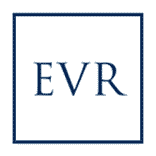Smart City Lab Eur
The EUR pentagon could be the ideal incubator for a prototype smart city, a "local training facility" in which to achieve the goal set by the European Union as essential requirements for communities of the future. Its distinctive features may, in fact, be used for all those "smart" technologies, aimed at improving energy efficiency, waste management, the protection of green areas, mobility, but also communication, as essential means of spreading and sharing the new way in which town centres are lived:
- 19 Km of underground galleries, threading through the pentagon, which house an equal number of kilometres of optical fibre, represent an unique structural factor when looking at an "intelligent" platform;
- 70 hectares of green belt, comprising an artificial lake, in which to promote eco-sustainable lifestyles, such as the learning garden pilot scheme;
- an extraordinary cultural heritage, with a strong vocation for tourism.
Not without reason, RAI, in the transmission "La storia siamo noi" ("We are history") dedicated part of the episode Eur: the future of History on EUR, as an ideal location in which to develop the intelligent city of the future, interviewing one of the top international experts on new technologies and cities of the future, the architect Carlo Ratti, professor at the MIT in Boston ( Read the article). But what, in reality, are the planning ideas that might be developed in agreement with the relevant Institutions, to implement this intelligent development?
Among the most interesting possibilities is the plan to create, first of its kind, a smart grid, that is to say an organic system of infrastructures, services and technology, that, starting with the generation and distribution of power from renewable sources, may also envisage a system for the automatic collection and management of waste, with a low environmental impact ( Read the articles). To do this, a project called Energy Eur has been developed, imagining electrical and thermal power generation systems involving two co-generation plants, located within the pentagon and connected by means of a high energy-efficiency, remote distribution ring - laid within the 19 Km of galleries already present - that might serve the various users, starting from the Rome Convention Center La Nuvola and going on to the museums, to the Ministerial offices, to large companies, giving a reduction in pollutant emissions. Also, given the 70 hectares of green belt, a lighting plan for EUR's parks has been imagined: technological lamp posts equipped with video cameras, SOS systems, wi-fi, which are already widely used in the parks and gardens managed by EUR SpA. All this would allow greater control of public areas, making these spaces - which are currently almost all without lighting - safer and more liveable even during the hours of darkness. The lamp posts could also support electric power points for cars and bikes, to help encourage the use of electric vehicles, particularly in view of the fact that car sharing is already widely used in the district.
And to improve cross-modal mobility? What are the possibilities?
A plan for cycle lanes has been studied, that would help improve eco-sustainable mobility within the southern area of the city and elsewhere, using interchanges to join planned sections to existing ones and to other forms of mobility (read the articles). Extending this still further, it would then be advisable to transform the Rome-Lido line into a light urban railway and to create a people mover that connects - via the Roma-Lido interchange - Fiumicino airport and the Nuova Fiera di Roma with EUR, that is to say connecting the conference centre and the cultural centre.
Application of these smart technologies and development of the infrastructures needed to make a city truly "intelligent" naturally also requires citizens to share this new culture, by spreading information and knowledge, particularly via digital technology. This is because people have to take on board this culture, that leads from a modern city to a contemporary, "smart" city, by shared participation at all levels, including knowledge of the historic and artistic heritage.
This is the sense of the EUR.020 project, designed to encourage the joint participation of citizens in the artistic processes and to promote contemporary creativity through: development of a cultural district - in collaboration with MIBACT - linking the 5 museums already present in buildings owned by EUR SpA (Luigi Pigorini National Museum of Ethnographic History, National Museum of Popular Arts and Traditions, National Museum of the Late Middle Ages, Museum of Roman Civilisation, the Planetarium and the Astronomical Museum) along with the patrimony of the Central State Archives and the History of Communications Museum; the creation of an open cultural space, or a space given over to creativity - whether formative or representative - potentially in synergism with the cultural district.
This is the sense in which EUR can take on a pioneering role in the intelligent implementation of technology, to create a city that is sustainable, liveable and competitive. A laboratory of new ideas, constantly evolving, that can be used by all.
To find out more, read the press coverage by subject, and consult the Sole 24 Ore report on sustainable development "Un pianeta smart è un sogno realizzabile (A smart planet is an achievable dream)"
